While lithium and uranium markets were depressed in 2018, a rebound could occur, as demand pressures for both metals grow in the years ahead. Here’s a look at eight juniors that are active players in lithium and uranium exploration and development.
APPIA ENERGY
Toronto-based junior Appia Energy (CSE: API; US-OTC: APAAF) is involved in uranium and rare earth element (REE) exploration in the prolific Athabasca basin district of northern Saskatchewan, and uranium and REE development and mining in northern Ontario’s historic Elliot Lake mining camp.
Appia is led by president and CEO Anastasios (Tom) Drivas, who is described as a business entrepreneur with over 30 years of experience in various industries, including more than 20 years in the mineral resource industry. He is also president and CEO of Romios Gold Resources, a publicly traded company founded in 1995.
Geologist James Sykes is Appia’s vice-president of exploration and development, and has previous work in the Athabasca basin related to NexGen’s Arrow deposit and Hathor’s Roughrider deposits.
Appia’s REE project in the Athabasca is named Alces Lake and is located east of Uranium City. The company describes Alces Lake as the highest-grade REE occurrence known in Saskatchewan, with grades comparable to those found in South Africa’s world-class Steenkampskraal deposit.
In mid-2018, Appia completed the first-ever drill campaign on the property, with 15 holes confirming depth extension of high-grade surface REE mineralization.
Appia plans to return to Alces Lake in 2019 with a $1.5-million exploration program.
Appia’s uranium properties in the Athabasca include Loranger, Eastside and North Wollaston — all in the Wollaston Lake area.
In December Appia raised $1.4 million for exploration work this year at Loranger and Alces Lake.
FISSION 3.0
Fission 3.0 (TSXV: FUU; US-OTC: FISOF) is a Canadian-based uranium project generator with a portfolio of prospects in the Athabasca basin, as well as a property in the emerging Macusani uranium district in southeastern Peru.
The company’s management is headed by CEO and chairman Dev Randhawa and chief operating officer and chief geologist Ross McElroy, who both founded and still run Fission Uranium, which discovered the Patterson Lake South (PLS) high-grade uranium discovery, where advanced exploration and development work is ongoing.

A drill rig at on Fission 3.0’s Patterson Lake North uranium project in Saskatchewan. Credit: Fission 3.0.
Earlier, the same team also founded Fission Energy, which made the J-Zone high-grade uranium discovery in the Athabasca basin, which was sold to Denison Mines.
Fission 3.0 was created by spinning off grassroots uranium projects from Fission Uranium so the parent company could focus its attention on PLS.
In January, Fission 3.0 started a 1,850-metre, five-hole drill program at its PLN project, located north alongside Fission Uranium’s PLS. The junior says the program will focus on targets within a 700-metre mineralized corridor found by previous drilling. Fission 3.0 plans to drill 3,250 metres at PLN this year.
FRONTIER LITHIUM
Sudbury, Ontario-based Frontier Lithium (TSXV: FL; US-OTC: HLKMF) is exploring its Pak lithium deposit in what it calls “Electric Avenue” — a “newly emerging, premium lithium-metal district,” hosted in the Canadian Shield of northwestern Ontario.
Frontier describes the deposit as having lithium in a “rare, high-purity, low-iron spodumene” that is analogous to the Greenbushes deposit in Australia.
The Pak deposit has a measured and indicated resource of 7.5 million tonnes of 2.02% Li2O and an inferred resource of 1.8 million tonnes of 2.10% Li2O, which has a technical, ceramic-grade spodumene with low inherent iron (below 0.1% Fe2O3).
The junior recently found a lithium-cesium-tantalum pegmatite showing called Spark, which at surface shows a channel cut with similar grade and composition to Pak. The surface exposure of the discovery is three times larger than the Pak pegmatite, with widths greater than 100 metres and a strike length exceeding 300 metres.
Frontier’s goal is to “become a low-cost, fully integrated lithium producer” by developing Pak, where it has already completed a prefeasibility study to assess the economic viability and technical feasibility of producing lithium concentrates.
LSC LITHIUM
Ian Stalker-led LSC Lithium (TSXV: LSC; US-OTC: LSSCF) is based in Toronto and describes itself as an “emerging lithium producer that has amassed a large portfolio of prospective, lithium-rich salars in northern Argentina, and is focused on becoming a significant player in the supply of high-quality lithium product to global markets.”
LSC’s properties are located in the “Lithium Triangle,” where Argentina, Bolivia and Chile intersect, and its 3,000 sq. km land package covers multiple, non-contiguous salars.
Its five development-stage lithium projects consist of lead project Pozuelos–Pastos Grandes, as well as Salinas Grandes (Salta), Salinas Grandes (Jujuy), Rio Grande and Jama.
In January, LSC entered into an agreement to be bought by privately held, South American oil and gas developer Pluspetrol Resources for 66¢ per LSC share, or $111 million in total.
LSC chairman Stephen Dattels said in a release that “LSC has been able to produce a large lithium carbonate resource at its Pozuelos–Pastos Grandes project as well as a robust PEA. It also has an extensive portfolio of high-quality lithium exploration assets, most notably at Rio Grande and Salinas Grandes. However, since February 2018, capital markets have been difficult for junior lithium explorers in Argentina and elsewhere, resulting in a correction in market valuations across the board. Notwithstanding this market correction, and due to our progress in advancing our top-tier assets, we have achieved an opportunity for shareholders to realize a liquidity event at normal market premiums. LSC’s team of technical and corporate professionals, led by Ian Stalker, are deserving of substantial credit for delivering this result, and in recognition thereof, Ian Stalker has been granted a share award by LSC’s Board of Directors of 1 million shares.”
NEO LITHIUM
Waldo Perez-led Neo Lithium (TSXV: NLC; US-OTC: NTTHF) is active in South America’s Lithium Triangle. Its Tres Quebradas (3Q) lithium brine project in Argentina’s Catamarca province covers 350 sq. km, and hosts a measured and indicated resource of 714,000 tonnes lithium-carbonate equivalent at an average grade of 716 milligrams lithium per litre, plus an inferred resource of 1.34 million tonnes lithium-carbonate equivalent at an average grade of 713 milligrams lithium per litre.
The company says 3Q is one of the highest-grade lithium brine projects in the world. It has the lowest impurity content of any known salar; its salar footprint is large, at over 150 sq. km; and it is wholly owned and fully permitted.
Neo Lithium contracted GHD — an engineering firm with expertise in lithium brines — to finish a prefeasibility study at 3Q by first-quarter 2019. GHD did a preliminary economic assessment for 3Q in 2017.
In January Neo Lithium reported that it had completed and tested a pilot plant built by the Instituto de Investigaciones Tecnologicas from Universidad de Concepcion in Chile, and shipped the plant to a warehouse in Fiambala, in Argentina’s Catamarca province.
Once on-site at 3Q later in the first quarter, the plant will produce lithium carbonate from lithium brine being collected in pilot evaporation ponds.
The annual capacity of the pilot ponds is over 500 tonnes of an approximate 4% lithium brine per year.
Neo Lithium chief operating officer Gabriel Pindar said in a release that management “hopes the proposed prefeasibility study will support that the plant can produce battery-grade lithium at one of the most competitive cash costs of the market.”
POWER METALS
Vancouver-based Power Metals (TSXV: PWM; US-OTC: PWRMF) says it is “committed to building an arsenal of projects in lithium and other power metals, as we see an unprecedented opportunity to supply the staggering growth of the lithium battery industry.”
The junior is planning a drill program at its Paterson Lake property, located 60 km north of Kenora in northwestern Ontario.
Power Metals has two lithium drill targets at Paterson Lake named Marko’s Pegmatite and Jesse’s Pegmatite, located along two parallel northeast–southwest petalite pegmatite trends.
Highlights from previous work at Marko’s Pegmatite include: 268 metres strike length at surface; a range of 3.36% to 4.43 % Li2O from 13 grab samples; and 0.056% to 1.4% tantalum per tonne from five grab samples.
Power Metals says that nine historic drill holes on the Patterson Lake property show there is lithium and tantalum mineralization at depth on Marko’s Pegmatite, and it is not just one pegmatite dike, but two: Marko’s and North Marko’s.
UEX
Saskatoon-based UEX (TSX: UEX; US-OTC: UEXCF) is involved in 19 uranium projects in the eastern, western and northern perimeters of Saskatchewan’s Athabasca basin.
These 19 projects include eight that are 100% owned and operated by UEX; one joint venture with Orano Canada Inc. and ALX Uranium Corp. that is 50.1% owned by UEX, and is under option and operated by ALX; eight joint ventures with Orano; one joint venture with Orano and JCU (Canada) Exploration; and the Christie Lake project, which is 60% owned by UEX with JCU (Canada) Exploration Co. Limited and operated by UEX.
The company is also involved in a wholly owned cobalt-nickel exploration project named West Bear in the Athabasca basin.
In January, UEX reported that drilling is underway at West Bear property with the objective of expanding the high-grade cobalt-nickel deposit. The 2019 winter exploration program will consist of 17,000 metres of drilling in up to 160 holes using two drill rigs. Initially, the program will focus on extending high-grade cobalt mineralization along strike to the west.
WEALTH MINERALS
Vancouver-based Wealth Minerals (TSXV: WML; US-OTC: WMLLF) is a junior active in Canada, Mexico, Peru and Chile, with a focus on acquiring and developing lithium projects in South America.
The Hendrik van Alphen-led junior says that with its Atacama Salar project, it has a “large land position in the lithium industry’s leading salar,” and that its development plans are to follow upon the success of third-party production facilities south of its land position in the Atacama Salar. These third-party facilities represent a third of global lithium production.
In January, Wealth Minerals arranged a $1.5-million private placement, with net proceeds to help fund exploration and development of its Atacama project, as well as general corporate purposes.
In December, Wealth added battery-technology veteran Stefan Schauss to its board, and hired Cesar Jil to be general manager for Wealth in Chile, having previously served as manager of lithium-extraction technologies at Albemarle.

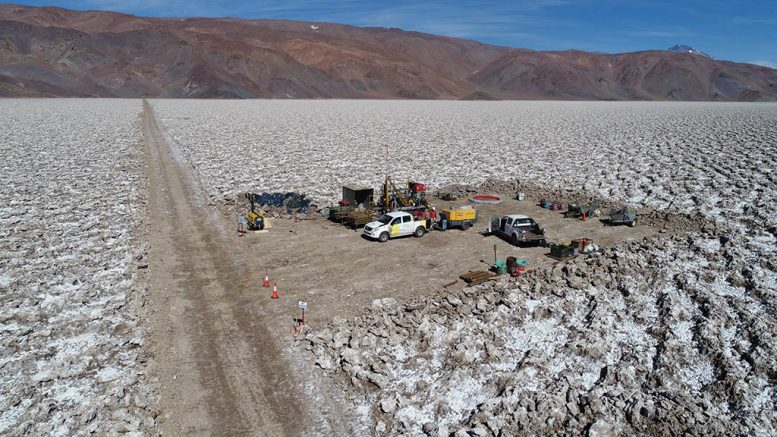
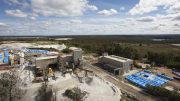
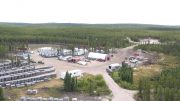
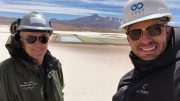
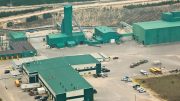
Be the first to comment on "Lithium & Uranium Snapshot: Eight energized juniors on the move"